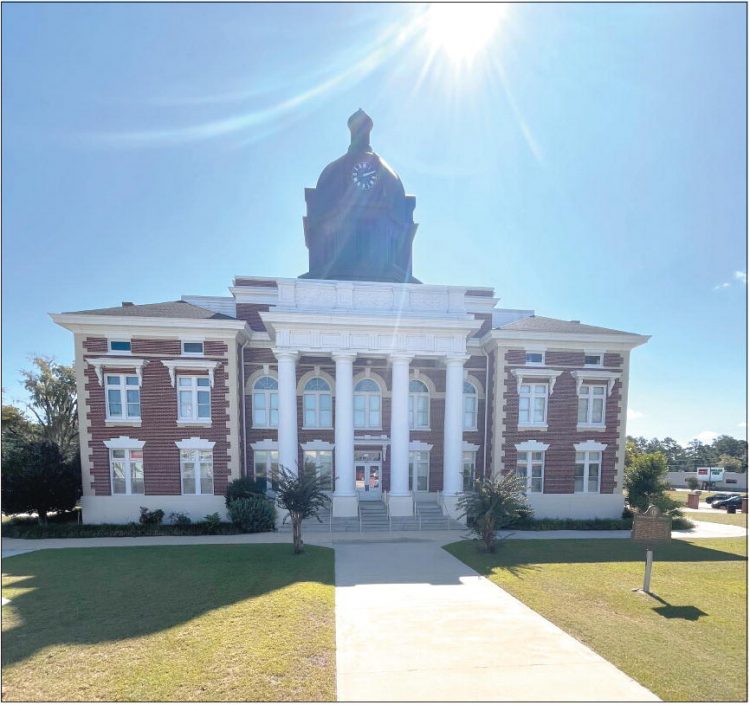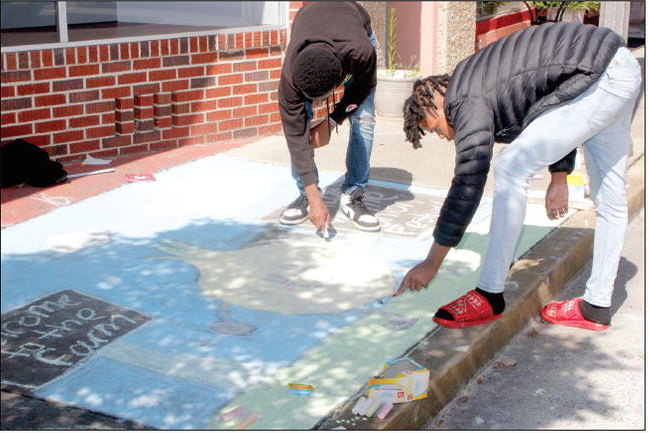continued from page were many ….


continued from page
were many corrections that needed to be made to Montgomery facilities. This summer, commissioners approved for the company to complete a total audit of the County facilities in order to determine exactly what needs to be changed in various buildings.
This audit was completed by ABM Industries representative Tim Williamson, who reviewed every area of the properties. “He’s crawled through every space and looked at every possible thing you can in your county and government buildings,” Ivory told the commissioners.
After completing this audit, the company has spoken with the County administration and determined a plan of action to address the facilities within a 20-year period. All facilities will receive some form of energy savings upgrade – such as the sealing of the building’s envelope (the doors, windows, and any other area that may let air in or out), replacement of water fixtures, installation of new LED lighting, and more. Most of the work will be undertaken at the courthouse.
The Montgomery County Courthouse, which is listed on the National Register of Historic Places, has not had any major renovations in decades, which has caused several aspects of the structure to need addressing.
One of the most pressing issues with the Courthouse is the exterior brick and mortar of the structure. According to Williamson, when the structure was first built in 1907, the mortar was not properly applied on the vertical sides of the brick; rather than add additional mortar to the vertical areas when stacking the bricks, the workers left a thin lining of mortar, which causes moisture to enter the walls. To address this, Williamson brought in a brick and mortar expert who weighed the options for fixing this issue and ultimately helped the company to decide to seal the areas by adding additional mortar work. This will fix water penetration issues for up to 30 years.
The company also plans to completely encapsulate the structure’s basement in order to preserve the area. Williamson spoke on these plans saying, “The building is from 1907. The brick and apron around the building has aged. When you get inside, it’s pretty neat; the entry point is what we believe to be the original jail. Past that, the next 60-70% of the building is open. We want to lock in what is there to avoid further deterioration.”
To accomplish this, a drain and insulated boarding will be installed in the basement to ensure that all moisture is kept out and that no air enters or escapes the area. Williamson noted that he believes this action will also help to insulate the first floor of the building, adding to further energy savings.
The flat area of the structure’s roof will be resealed and the shingles will be replaced, as Williamson shared that he had discovered that the shingles were not installed properly in the valleys of the roof and allowed moisture in. The structure’s gutters will be ground out and sealed, and the plaster on the interior walls of the courthouse that have been damaged by water will be repaired.
One of the largest energy savings will come from the replacement of several HVAC units at the courthouse, which Ivory explained are severely outdated. “It will address all of the HVAC issues throughout the facility. You have some extremely old systems that will all be updated and addressed,” he said. “Quite a few of your HVAC units that are running are from the early 1990s. They are extremely old, and are some of the oldest we’ve seen in places.”
In addition to replacing the outdated units, some units will also be downsized, such as the unit above the judge’s chambers, which Ivory explained is too large. “You have some issues with the unit in the courthouse above the judge’s area – they can’t run it because it’s so loud. Ultimately, that’s an oversized-built system; it’s larger than what was needed,” he commented.
An automated control system will be installed that will allow administrators to control the building’s HVAC units from remote areas. This system will also be able to add security controls and other features to it in the future.
In addition to this, the company will install several new LED lighting fixtures and will work to get the building up to code and safety requirements. Ivory even told commissioners that Williamson had noticed that the building’s National Register of Historic Places plaque was damaged and had contacted the state, which will be supplying a new one.
Besides the courthouse, the company will also complete work to create energy savings at every county facility, including: Addressing water in filtration issues, installing a drainage system, sealing, pressure washing, and upgrading lighting and an HVAC unit at the Montgomery County Senior Center Replacing HVAC units and sealing the building envelope at the Montgomery County Health Department Replacing HVAC Units, swapping fixtures, and correcting roofing issues at the Montgomery County Government Annex Repairing a roong issue, replacing an HVAC unit, and sealing the building envelope at the Montgomery County Tax Assessor and Commissioner’s office Downsizing the HVAC unit, sealing the building envelope, and sealing the roof at the Montgomery County Extension Office Installing wi ther mostats and exterior LED lighting at the Montgomery County Board of Commissioners Office After hearing this report, the Commissioners voted to move forward with the project, but not to exceed $2.9 million. Ivory explained that if a previously undiscovered issue did arise that needed addressing, the agency would complete the work and absorb the cost as part of the agreement between the parties.
The next step in the process is for County Manager Heather Scott to begin seeking a capital lease agreement, which is very similar to a loan, from a banking entity. Once that lease is secured, the County will move forward with signing the contract.
Though spending almost $3 million on the projects, ABM Industries has guaranteed an energy savings of at least $25,000 per year for 20 years; if this amount of savings is not met through the reduction of utility bills throughout the year, the company will pay the County each year to ensure that $25,000 is returned to the county.
“I appreciate Tim and the level of investigative work he’s done on these buildings. It’s impressive,” Commissioner Ginger Morris commented. “We thank you, but the people that work in these buildings every day will thank you more.”
Commissioner Chad Kenney also spoke on the agreement. “This project is more than just energy savings; it provides a way to finance much-needed improvements to the courthouse and other county buildings,” he emphasized. “We have spent a lot of money over the years to patch roofs and fix other things that have never been repaired correctly to stop the issue. This company will be someone we can go back to if there are problems.
Kenney said that the projects will take around a year to complete, which will begin once the formal contract is signed.








